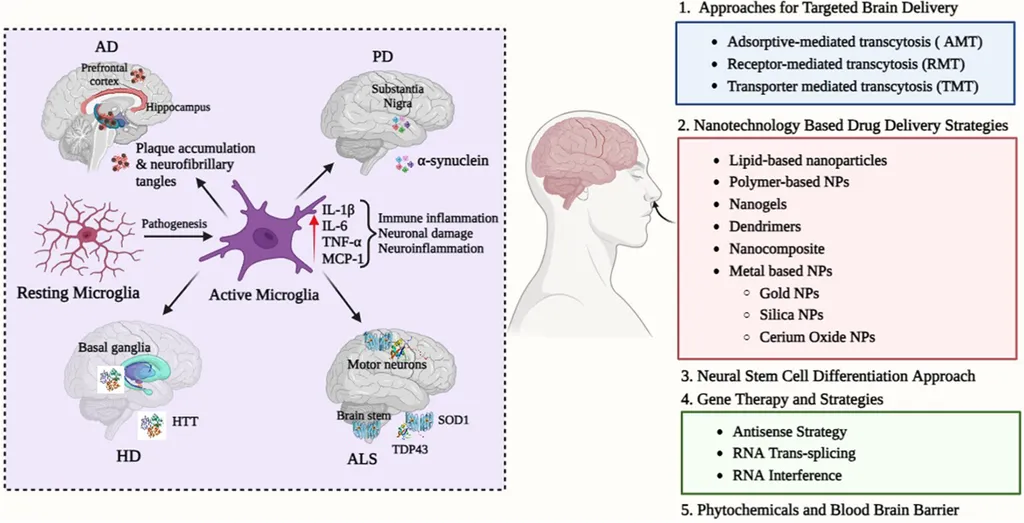In the heart of Pakistan, researchers are making strides that could revolutionize the treatment of neurodegenerative diseases, offering a glimmer of hope for millions worldwide. Humaira Aslam, a leading scientist at the Centre for Nanosciences, University of Okara, is at the forefront of this groundbreaking research, published in the journal ‘Exploration of BioMat-X’ (which translates to ‘Exploration of BioMaterials-X’).
Aslam and her team are exploring the potential of nanoparticles (NPs) to overcome one of the most significant barriers in treating neurodegenerative diseases: the blood-brain barrier (BBB). This selective barrier, which protects the central nervous system (CNS) from harmful substances, has long posed a challenge for delivering therapeutic agents to where they are needed most.
“Nanoparticles offer unprecedented solutions to these obstacles,” Aslam explains. “Due to their size, surface characteristics, and ability to be functionalized, these carriers can directly deliver therapeutics across the BBB.”
The implications for the energy sector, particularly in the realm of biotechnology and medical applications, are substantial. As our population ages, the prevalence of neurodegenerative diseases like Alzheimer’s, Parkinson’s, and Huntington’s is expected to rise, placing a significant burden on healthcare systems and economies worldwide. The development of more effective treatments could not only improve the quality of life for patients but also reduce the economic impact of these diseases.
Aslam’s research highlights several key advantages of using nanoparticles in the treatment of neurodegenerative diseases. They can enhance the bioavailability of anti-disease agents, making them more effective and specific in their action, and reducing side effects. Moreover, nanoparticles can serve as molecular carriers, facilitating transport across the BBB through receptor-mediated transcytosis or by disrupting the barrier to deliver drugs directly to neural tissues.
The therapeutic applications of nanotechnology also extend to early diagnosis and disease tracking. Nanoparticles can replace traditional contrast media for magnetic resonance imaging (MRI) and positron emission tomography (PET) scans, improving diagnostic accuracy and enabling earlier intervention.
Furthermore, nanoparticles can enhance the solubility and stability of therapeutic compounds, increasing their therapeutic potential. They can also encapsulate antioxidants and anti-inflammatory compounds, targeting the areas most affected by neurodegenerative diseases and minimizing neuronal deterioration.
Aslam’s work is part of a broader trend towards ‘theranostic’ nanoparticles, which combine diagnostic and therapeutic features. These sophisticated systems offer continuous diagnosis and treatment, creating unprecedented opportunities to meet the unmet needs in CNS disorders.
The potential commercial impacts of this research are vast. As the global market for nanotechnology in healthcare continues to grow, companies that invest in this technology could gain a significant competitive advantage. Moreover, the development of more effective treatments for neurodegenerative diseases could lead to substantial cost savings for healthcare systems and economies worldwide.
Aslam’s research is a testament to the power of innovation and the potential of nanotechnology to transform the field of medicine. As she puts it, “This is just the beginning. The future of managing neurodegenerative diseases and innovative neuroimaging procedures looks promising with the evolution of nanotechnology.”
With ongoing research and development, the energy sector can expect to see significant advancements in the treatment of neurodegenerative diseases, driven by the power of nanotechnology. Aslam’s work is a shining example of how scientific innovation can pave the way for a healthier, more sustainable future.

